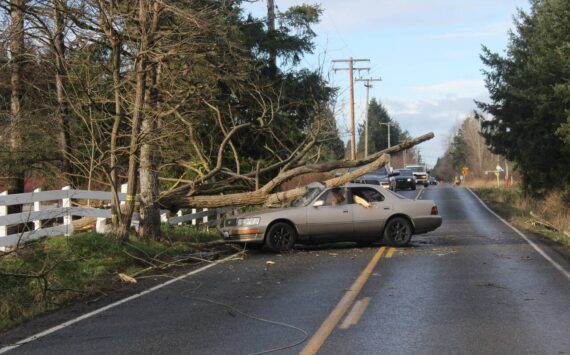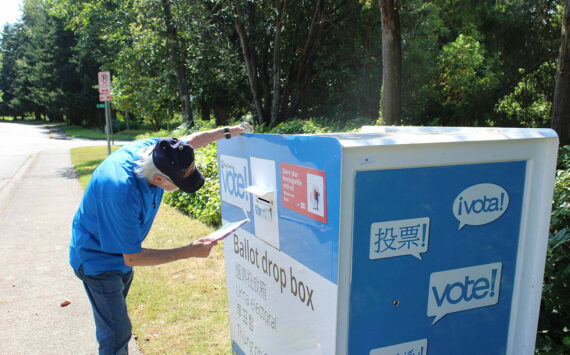Rain and blustery winds couldnt stop public officials, community leaders and residents from turning out Tuesday morning to celebrate the beginning of the new Salishan, a $200 million project that will transform one of Tacomas poorest neighborhoods into a rebuilt and vibrant mixed-use community.
Gathered at Portland Avenue and East 40th Street under a large tent that provided some refuge from the days precipitation, speakers lauded the project for providing homes for those who need assistance, as well as the economic development it brings to the East Side.
Calling housing a fundamental part of a successful life, Tacoma Housing Authority Executive Director Peter Ansara proudly noted there will be no net loss of affordable rental homes. Salishan will also offer home ownership for the first time.
U.S. Rep. Norm Dicks (D-6th District), who was instrumental in securing federal funds for the project, agreed.
This is a great project, he said, noting it was just a question of getting if done.
Nothing is more important than having a place to live, he stated. I think this has been an incredible partnership, he said of cooperation between the federal government and Tacoma.
We stand here on the cusp of an enormous transition here at Salishan, said Stanley Rumbaugh, vice chairman of the THA Board of Commissioners.
He went on to call Salishan a special place where dreams transition into realities.
While fulfilling the communitys mission to serve low-income families, Salishan will also have an economic impact on the area.
Salishan will bring 2,500 new jobs to Tacomas East Side, Rumbaugh said.
Mayor Bill Baarsma called Salishan an important part of Tacomas redevelopment.
It represents a significant investment of money and resources, he said. This project is on-time and on-budget.
Salishan will keep money in the community, Ansara observed, and spur investment in the area.
This project will provide a catalyst for development, he said.
For City Councilman Rick Talbert, who represents the East Side as part of District 4, Salishan holds special meaning. His grandfather and father at one time called Salishan home.
This neighborhood is very important to me, he said. It all adds up to this: Theres a bright future for the East Side.
Salishan was originally built in 1943 as temporary housing for workers during World War II.
Startup money for the revitalized Salishan comes from a $35 million HOPE VI grant from the federal Housing and Urban Development awarded in 2000.
In April 2001, the HOPE VI grant was executed. (HOPE is an acronym for Housing Opportunities for People Everywhere. The Roman numeral VI is a random choice, according to HOPE VI coordinator Clarissa Cleo Everett, because the organization didnt want people to think of it as new.)
The HOPE VI concept is a U.S. Department of Housing and Urban Development program that supports the redevelopment and replacement of public housing. It encourages local housing authorities to seek partnerships with private groups to provide affordable mixed-use and mixed-income housing.
Funding for the project comes from low income housing tax credits, tax-exempt volume cap bonds, home ownership sales, Community Development Block Grants, and various other sources.
The new Salishan will feature updated streets, parks and open space and renovated healthcare and education facilities.
When complete, the 188-acre revitalization will include a total of 1,270 housing units:
– 921 rental units available to those with low incomes;
– 15 home ownership units for which residents can pay a portion of the down payment with labor;
– 88 affordable homes available for purchase to low-income households; and
– 246 market-rate home ownership units.
Additional amenities include a new medical and dental clinic in partnership with Community Health Care; an education technology center in association with Washington State University, Metropolitan Development Council and Tacoma Community College; new property management and maintenance facilities; and creation of new parks and open space and enhanced connection to 150 acres of undeveloped adjacent park land.




